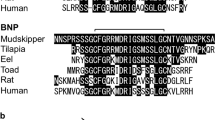Abstract
ALTHOUGH anal papillae of freshwater mosquito larvae have been extensively investigated and shown to absorb actively sodium, potassium and chloride ions from the external medium1–7, this organ has been assumed to have no function and an impermeable structure in salt water species8,9. Considering insects in general, “in dilute external solutions the salt water larvae become hyperosmotic to the medium. Salt uptake mechanisms have yet to be demonstrated in these forms …”9. We wish to report the first evidence for extra-renal ion transport and regulation in the larva of a salt water insect (A. campestris). Initial experiments established that the salinity tolerance limits and the general pattern of ionic and osmotic regulation in fourth instar larvae of A. campestris are very similar to those of A. detritus, the only salt water mosquito previously studied in this context3,8. In previous work there has been uncertainty about the attainment of steady states9 and we took these into account. When A. campestris larvae were transferred to tap water, 800 mmoles/l. of sodium chloride and solutions of intermediate concentration most change in blood ion concentrations and osmotic pressure occurred during the first day so that steady values were observed within 2 days.
This is a preview of subscription content, access via your institution
Access options
Subscribe to this journal
Receive 51 print issues and online access
$199.00 per year
only $3.90 per issue
Buy this article
- Purchase on Springer Link
- Instant access to full article PDF
Prices may be subject to local taxes which are calculated during checkout
Similar content being viewed by others
References
Koch, H. J., J. Exp. Biol., 15, 152 (1938).
Wigglesworth, V. B., J. Exp. Biol., 15, 235 (1938).
Ramsay, J. A., J. Exp. Biol., 27, 145 (1950).
Ramsay, J. A., J. Exp. Biol., 30, 79 (1953).
Treherne, J. E., J. Exp. Biol., 31, 386 (1954).
Stobbart, R. H., J. Exp. Biol., 42, 29 (1965).
Stobbart, R. H., J. Exp. Biol., 47, 35 (1967).
Beadle, L. C., J. Exp. Biol., 16, 346 (1939).
Shaw, J., and Stobbart, R. H., Adv. Insect Physiol., 1, 315 (1963).
Copeland, E., J. Cell Biol., 23, 253 (1964).
Sohal, R. S., and Copeland, E., J. Insect Physiol., 12, 429 (1966).
Author information
Authors and Affiliations
Rights and permissions
About this article
Cite this article
PHILLIPS, J., MEREDITH, J. Active Sodium and Chloride Transport by Anal Papillae of a Salt Water Mosquito Larva (Aedes campestris). Nature 222, 168–169 (1969). https://doi.org/10.1038/222168a0
Received:
Issue Date:
DOI: https://doi.org/10.1038/222168a0
This article is cited by
-
10.1007/BF00334981
CrossRef Listing of Deleted DOIs (2011)
-
The anal portion as a salt-excreting organ in a seawater mosquito larva,A�des togoi Theobald
Journal of Comparative Physiology ? B (1980)
-
Evidence for neuronal control of ion transport in chironomid larvae
Nature (1975)
-
Rectal ultrastructure in salt- and freshwater mosquito larvae in relation to physiological state
Zeitschrift f�r Zellforschung und mikroskopische Anatomie (1973)
-
The morphology and ultrastructure of the Malpighian tubules and hindgut in Cenocorixa bifida (Hung.) (Hemiptera, Corixidae)
Zeitschrift f�r Morphologie der Tiere (1970)
Comments
By submitting a comment you agree to abide by our Terms and Community Guidelines. If you find something abusive or that does not comply with our terms or guidelines please flag it as inappropriate.



